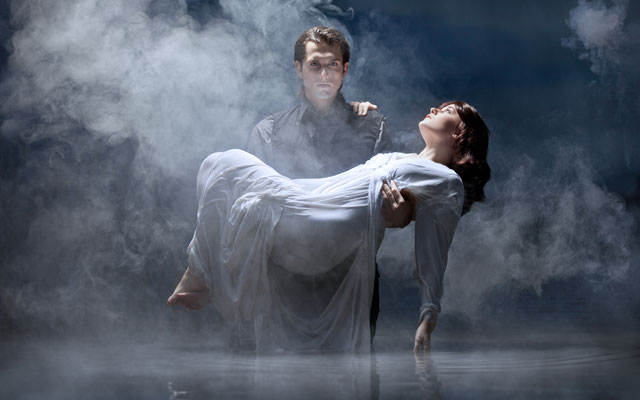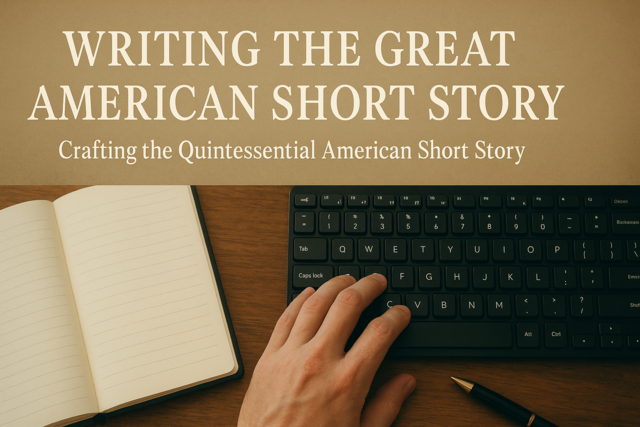Online Class: Romance Writing

no certificate
with CEU Certificate*
-
13Lessons
-
28Exams &
Assignments -
1,812Students
have taken this course -
6Hours
average time -
0.6CEUs
Course Description
Crafting Romance Novels: From Dream to Reality
The allure of crafting a romance novel has captivated countless individuals across the globe. Given that romance has been the leading fiction genre in the United States for over three decades, the prospects within romantic fiction are more promising than ever. As of 2023, the romance genre holds a market share of around 34%, making it a powerhouse in the literary landscape.
But what makes romance writing so intriguing, and simultaneously challenging, is its specialized nature. There are stringent criteria concerning the plot, characterization, novel length, and even manuscript formatting. These benchmarks aren't mere industry whims but are reflections of what avid romance readers anticipate. Meeting these expectations is paramount for budding writers hoping to carve a niche in this sector.
This meticulously curated course is designed to arm you with the tools and insights needed to craft a romance novel that stands out in a crowded market. It offers an in-depth dive into the intricacies of romance writing, ensuring your manuscript resonates with both agents and readers alike.
Course Breakdown:
Lesson 1: Introduction to Romance Writing
Dive deep into the heart of romance writing, understanding its evolution and importance in the literary domain. Discover the power of love stories and the potential they hold in the modern market.
Lesson 2: Exploring the Sub-genres in Romance
Not all romances are created equal. From historical to paranormal, contemporary to fantasy - understand the myriad sub-genres, their characteristics, and audience preferences.
Lesson 3: Setting the Foundation
Before penning down your story, there are essential preparatory steps to consider. This lesson guides you through research, understanding audience demographics, and setting a roadmap for your writing journey.
Lesson 4: Crafting Your Style
Every writer has a unique voice. Delve into the nuances of narrative voice, tone, and pacing that will make your romance novel distinctively yours.
Lesson 5: Painting the Perfect Setting
A romance isn't just about two people; it's also about where their love story unfolds. From bustling cities to serene countrysides, learn how to craft settings that enhance your narrative.
Lesson 6: Designing the Ideal Hero
What makes a hero swoon-worthy? Understand the psychology of crafting male protagonists who resonate with readers, exploring aspects like backstory, motivation, and character arc.
Lesson 7: Crafting the Captivating Heroine
A romance is as much about the heroine as the hero. Dive into the art of designing female protagonists who are strong, relatable, and pivotal to your love story.
Lesson 8: The Ensemble Cast
Beyond the lead pair, a host of characters play pivotal roles in a romance novel. Learn to create compelling side characters that enhance your narrative without overshadowing the leads.
Lesson 9: Weaving the Plot
A gripping plot is the backbone of any novel. Understand the structure, pacing, and key elements that make a romance story unforgettable.
Lesson 10: The Heart of Conflict
Romance without conflict can be flat. Grasp the essence of creating authentic, meaningful conflicts that drive your narrative and keep readers hooked.
Lesson 11: Penning Passionate Scenes
Romance novels often delve into intimate moments between characters. Learn the art of writing tasteful, evocative love scenes that are pivotal to your story's progression.
Lesson 12: Gearing Up for Submission
Your manuscript is ready, but how do you get it in front of the right eyes? This lesson offers insights into preparing your work for agents and publishers, ensuring it gets the attention it deserves.
Lesson 13: Expanding Your Horizon
As you near the end of this course, equip yourself with additional resources, books, and communities that will aid you in your ongoing romance writing journey.
Enroll now and set your romance writing aspirations into motion, armed with knowledge, insights, and the passion to tell unforgettable love stories.
- Completely Online
- Self-Paced
- Printable Lessons
- Full HD Video

- 6 Months to Complete
- 24/7 Availability
- Start Anytime
- PC & Mac Compatible
- Android & iOS Friendly
- Accredited CEUs

Course Lessons
Lesson 1. Writing Romance: A World of Passion and Possibilities
Immersed in a legacy that spans centuries, romance writers honor traditions rooted in Austen and Heyer while embracing modern voices that reflect today's diverse societal tapestry. A profound understanding of the genre's past and future paves the way for storytellers to evoke timeless emotions.Lesson 2. Bursting Boundaries: The New Age of Romance Writing
Romance writing is a limitless field where the blending of subgenres sparks fresh narratives, inviting authors to explore eclectic themes and forms. Grasping the differences between single titles and series titles aids writers in finding suitable publishers, while understanding subgenres allows for dynamic storytelling.Lesson 3. Embarking on Your Romance Novel Adventure
Transform your romantic storytelling dreams into tangible creations by adopting a disciplined yet flexible writing schedule and connecting with supportive communities. Immersing yourself in this process reveals the meditative potential of consistent practice, refining your prose through authenticity and creative collaboration.Lesson 4. Crafting Love Stories: A Guide for Aspiring Romance Authors
Effective romance writing hinges on choosing the right narrative voice and mastering the third-person point of view to engage readers emotionally. By alternating perspectives between protagonists, writers provide a multilayered understanding of the story's emotional core.Lesson 5. Weaving Magic into Romance Settings: A Writer's Guide
Creating compelling romance settings demands a fusion of thorough historical research and imaginative insights, where even fictional worlds resonate with readers through relatable context. Maintaining a consistent narrative voice allows the setting to amplify the story's thematic and emotional arcs.Lesson 6. Decoding Hero Archetypes: Alpha vs. Beta
For a hero's transformation to feel genuine, he must grapple with internal and external conflicts that challenge his worldviews. These battles, whether in historical or speculative settings, highlight personal evolution and align with the story's thematic essence.Lesson 7. Evolving Heroines, Evolving Narratives
Through characters like a passionate journalist or an innocent artist awakening to life's complexities, romance novels showcase women's journey toward autonomy and love on their terms. These narratives celebrate emotional growth, inviting readers into a world where love is a transformative catalyst for empowerment and self-discovery.Lesson 8. Enhancing Romance Stories with Captivating Secondary Characters
While the central romance in novels captivates, the vibrancy and richness often come from well-crafted secondary characters who deepen the narrative. These supportive roles can reflect on main themes and stir the storyline, giving authenticity and relatability to the love story.Lesson 9. Intricate Plot, Intrinsic Emotion: A Study in Romantic Storytelling
Romantic plot devices, such as love triangles and second-chance romances, introduce tension and transformability that drive character development and intrigue. These tools, when wielded thoughtfully, balance originality with familiar tropes, enhancing the narrative's emotional depth and richness.Lesson 10. Crafting a Compelling Narrative Through Conflict: A Romance Writer's Guide
In romance writing, conflict functions as the driving force between the hero and heroine, integrated through external events and internal emotions to captivate readers. By weaving subplots and secondary characters into the central narrative, conflicts enrich romantic tension, offering depth and connection.Lesson 11. Writing Intimate Moments: A Guide for Romance Authors
Understanding the nuances of genre expectations is crucial for an author to cater their love scenes accordingly, from subtle emotional intimacy in inspirational fiction to explicit encounters in erotica. The lesson emphasizes creating scenes that drive plot and character development by exploring varied sexual experiences within the genre's bounds.Lesson 12. From Draft to Deal: The Writer's Comprehensive Guide to Romance Publishing
Each finished manuscript holds a story crafted through dedication and resolve, inviting authors to embark on an adventure of meticulous revisions and strategic submissions to publishers or agents. As writers embrace feedback and refine their work, the ultimate goal transcends publication—it's the transformation through overcoming obstacles and enriching creativity.Lesson 13. Navigating the Romance Writing Landscape
Romance Writers of America (RWA) is a critical asset for writers, providing workshops, networking, and contests to enhance skills and elevate careers. Local charter groups offer face-to-face interactions, cultivating a supportive network where stories flourish, and creative bonds are forged.
Learning Outcomes
- Analyze the evolution of romance literature from its origins to modern-day subgenres, noting key milestones and influential authors, including Jane Austen and Georgette Heyer.
- Identify and describe at least three popular themes in the romance genre, such as historical, contemporary, or paranormal, with supporting examples from literature.
- Define the distinguishing characteristics of single titles and series titles in the romance genre with illustrative examples.
- Identify and describe at least three subgenres within romance literature, discussing their unique elements and thematic focuses.
- Define key strategies to establish a consistent writing routine for producing a romance novel, including setting clear goals and designating specific writing intervals.
- Demonstrate the ability to incorporate authentic character development and dynamic plot elements into romance narratives, ensuring heightened reader engagement through intricately crafted scenes.
- Demonstrate mastery of dual point-of-view by writing a scene that alternates perspectives while maintaining clarity and coherence.
- Identify the key conventions of the romance genre as outlined in the lesson, and apply these to create a narrative outline.
- Demonstrate the ability to utilize historical and contemporary research to create believable and authentic romance narrative backdrops.
- Identify specific strategies to integrate sensory details into romance settings, enhancing reader immersion and emotional engagement.
- Analyze the hero's journey in a romance novel to identify key elements of transformation and emotional growth, citing motivation and character development.
- Define hero archetypes by distinguishing between Type A and Type B heroes as described in romance writing, citing specific examples.
- Define the evolution of heroines in romance novels by identifying key traits that illustrate their transformation from traditional to modern archetypes.
- Demonstrate mastery of lesson content at levels of 70% or higher.
Additional Course Information

- Document Your Lifelong Learning Achievements
- Earn an Official Certificate Documenting Course Hours and CEUs
- Verify Your Certificate with a Unique Serial Number Online
- View and Share Your Certificate Online or Download/Print as PDF
- Display Your Certificate on Your Resume and Promote Your Achievements Using Social Media

Choose Your Subscription Plan
No Certificate / No CEUs
This course only
| Includes certificate | X |
| Includes CEUs | X |
| Self-paced |

|
| Instructor support |

|
| Time to complete | 6 months |
| No. of courses | 1 course |
Certificate & CEUs
This course only
| Includes certificate |

|
| Includes CEUs |

|
| Self-paced |

|
| Instructor support |

|
| Time to complete | 6 months |
| No. of courses | 1 course |
Certificates & CEUs
Includes all 600+ courses
| Includes certificate |

|
| Includes CEUs |

|
| Self-paced |

|
| Instructor support |

|
| Time to complete | 12 Months |
| No. of courses | 600+ |
Certificates & CEUs
Includes all 600+ courses
| Includes certificate |

|
| Includes CEUs |

|
| Self-paced |

|
| Instructor support |

|
| Time to complete | 24 Months |
| No. of courses | 600+ |
Student Testimonials
- "Great course. Challenging assignments. The instructor, is great, responsive as always." -- Nicholas Y.
- "The instructor is fair and consistent and I think does her job very well indeed." -- Anne F.
- "I loved this course and everything is going to help me finish my novel, so thank you!" -- Mikayla L.
- "Actually loved the class and learned so much." -- Elizabeth I.
- "Instructor was very helpful." -- Miranda P.
- "The assignments were most helpful to me" -- La P.
- "Everything was great." -- Betty H.
- "Melissa Merritt is one of the best instructors you have. She is very knowledgeable and helpful. She is a very encouraging instructor." -- Donna N.
- "It was all very helpful for me in preparing my book." -- Rosalind G.
- "The instructor was very prompt in reviewing and grading my assignments and answering my questions." -- Tiffany G.
Related Courses
-
 72 hours
7.2 CEUs
Writing Help Course Bundle
+ More Info
72 hours
7.2 CEUs
Writing Help Course Bundle
+ More Info
-
 17 hours
1.7 CEUs
Poetry Writing 101
+ More Info
17 hours
1.7 CEUs
Poetry Writing 101
+ More Info
-
 11 hours
1.1 CEUs
How to Write Short Stories for Children
+ More Info
11 hours
1.1 CEUs
How to Write Short Stories for Children
+ More Info
-
 5 hours
0.5 CEUs
Creative Writing for Beginners
+ More Info
5 hours
0.5 CEUs
Creative Writing for Beginners
+ More Info
-
 12 hours
1.2 CEUs
How to Write Case Studies
+ More Info
12 hours
1.2 CEUs
How to Write Case Studies
+ More Info
-
 11 hours
1.1 CEUs
Writing Effective Emails in the Workplace
+ More Info
11 hours
1.1 CEUs
Writing Effective Emails in the Workplace
+ More Info
-
 12 hours
1.2 CEUs
Advertising, Marketing and Sales Writing
+ More Info
12 hours
1.2 CEUs
Advertising, Marketing and Sales Writing
+ More Info
-
 12 hours
1.2 CEUs
Paranormal Romance Writing
+ More Info
12 hours
1.2 CEUs
Paranormal Romance Writing
+ More Info
-
 12 hours
1.2 CEUs
Write to Win: Secrets of Persuasive Writing
+ More Info
12 hours
1.2 CEUs
Write to Win: Secrets of Persuasive Writing
+ More Info
-
 19 hours
1.9 CEUs
Creative Writing 101
+ More Info
19 hours
1.9 CEUs
Creative Writing 101
+ More Info
-
 5 hours
0.5 CEUs
Writing the Great American Short Story
+ More Info
5 hours
0.5 CEUs
Writing the Great American Short Story
+ More Info
-
 9 hours
0.9 CEUs
Nonfiction Writing 101
+ More Info
9 hours
0.9 CEUs
Nonfiction Writing 101
+ More Info
-
 16 hours
1.6 CEUs
Advertising Copywriter
+ More Info
16 hours
1.6 CEUs
Advertising Copywriter
+ More Info
-
 11 hours
1.1 CEUs
Journaling and Memoir Writing
+ More Info
11 hours
1.1 CEUs
Journaling and Memoir Writing
+ More Info
-
 14 hours
1.4 CEUs
Journalism 101
+ More Info
14 hours
1.4 CEUs
Journalism 101
+ More Info
-
 6 hours
0.6 CEUs
Freelance Writing 101
+ More Info
6 hours
0.6 CEUs
Freelance Writing 101
+ More Info






